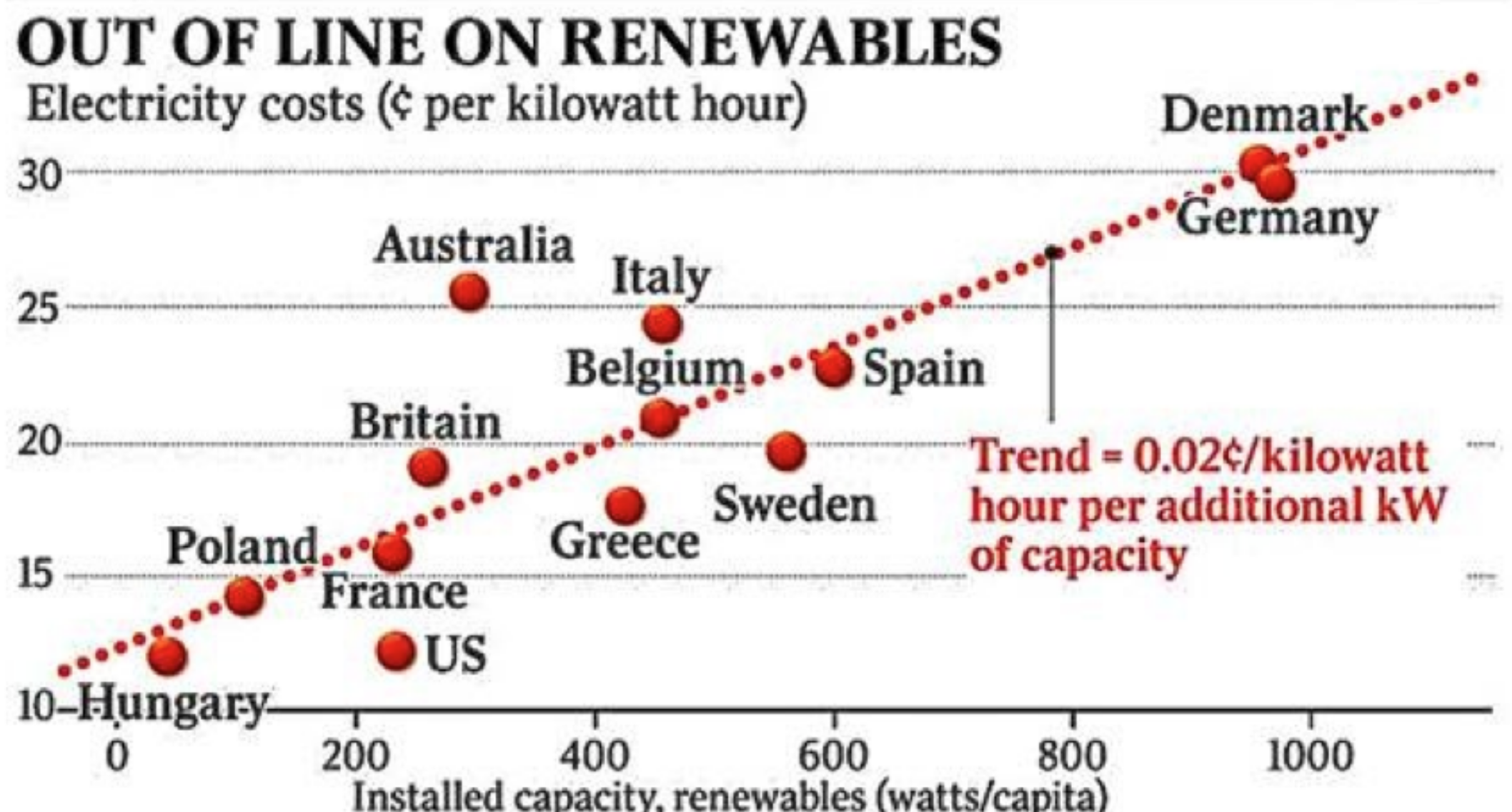...Utility-scale solar requires a large solar farm consisting of photovoltaic panels. For $100 million, one can buy a solar farm capable of generating about 80 megawatts of electric power when the sun is squarely shining on the panels. Depending on the geographical location and the climate, the average power generated will be about 18 megawatts, more during the day and nothing at night. More in summer and less in winter. If the power can be sold for $50 a megawatt-hour, about the cost of wholesale electricity generated by natural gas, the annual revenue earned by the plant would be $7.8 million. But why would anyone want to pay $50 per megawatt-hour for electricity that does not work at night or when the weather is bad? Better to buy it from a natural gas plant that one can count on.
How much would a utility really be willing to pay for erratic electricity from a solar farm? The answer is $20 per megawatt-hour or less. The reason is as follows. No utility would ever incorporate a solar plant to reliably provide electricity. Solar electricity is unreliable. But solar electricity, if it is cheap enough, could be used as a supplement to save fuel in a utility's main natural gas plants. When the solar was working, some of the utility's gas plants could be throttled back to save fuel. The fuel to generate a megawatt-hour of electricity in a modern natural gas plant costs about $20.
How much does the electricity from a $100-million solar plant cost? The biggest cost is the $100 million spread over the 25-year life of the plant. If you take out a 25-year, $100-million mortgage, the annual payment will be between about $7 million and $9 million depending on the interest rate of between 5 percent and 8 percent. A 5% interest rate is what a corporation with excellent credit might get. With fair credit, a corporation might get 8%. If a corporation has a poor credit rating, nobody is likely to loan it $100 million. The plant will produce about 157,680 megawatt-hours of electricity per year, 18 megawatts per hour average times 8,760 hours per year. The cost of the electricity, counting only the contribution from the construction cost of the plant, will be between $45 and $60 per megawatt-hour. If you sold this electricity to a utility for $20 per megawatt-hour, you would lose millions every year. If all costs are taken into account, the real cost of utility-scale solar power, where there is excellent sunshine, is about $70 per megawatt-hour.
Solar electric plants are being built because there are two subsidies and one mandate...
Read more:
https://www.americanthinker.com/arti...#ixzz5n5GlKnr4
Follow us: @AmericanThinker on Twitter | AmericanThinker on Facebook




 Reply With Quote
Reply With Quote








 )? The old cost of living argument doesnt even work (ie--switzerland, etc).
)? The old cost of living argument doesnt even work (ie--switzerland, etc). Everyone has a clever way to account for the butterfly effect
Everyone has a clever way to account for the butterfly effect 


